Supplemental Resources
A primary purpose of “Ka’m-t’em: A Journey Toward Healing” is testimonial justice whereby a space is given to share experiences of resistance, renewal and advocacy. In addition, the book is meant to shift the paradigm of thinking from a monological to a multilogical perspective. A multilogical perspective acknowledges multiple truths and perspectives of the same event. As such, we are providing a list of supplemental resources for readers who wish to learn more about the themes presented in this book. Please note that this list is not absolute and it will continue to evolve and grow.
CHAPTER 1: Voices from the Sacred - An Indigenous Worldview and Epistemology of Northwestern California
Supplemental Resources on Worldview and Epistemology
Book/Article Sources
Kawagley, O. (2003). Yupiaq Worldview: A Pathway to Ecology and Spirit. Long Grove, Illinois: Waveland Press.
Lang, J. (1994). Ararapikva. Berkeley: Heyday Books.
Meyer, M. (2003). Ho’oulu Our Time of Becoming: Hawaiian Epistemology and Early Writing. Honolulu: HI: Native Books.
McCovey, S.O. (2005). The Smokehouse Boys. Berkeley, California: Heyday Books.
Norton, J. (2007). Centering in Two Worlds: Essay on Native Northwestern California, Culture and Spirituality. Hemet, California: Center for the Affirmation of Responsible Education.
Video Sources
On Indian Ground. (2017). Chris Peters on Indian Ground. Retrieved from YouTube.
CHAPTER 2: More than a Boat - Institutional Frameworks, Bias, and Testimonial Injustice
Supplemental Resources
Book/Article Resources
Banaji, M.R. & Greenwald, A.G. (2013). Blind Spot: Hidden Biases of Good People. New York: Delacorte Press.
This book is a great resource in learning about mindbugs, cloning mechanisms, explicit and implicit biases that humans experience.
Braveheart, M.Y. & DeBruyn, L.M. (1998). The American Indian Holocaust: Healing historical unresolved grief. American Indian and Alaska Native Mental Health, 8(2), 56.
Fricker, M. (2007). Epistemic Injustice: Power and Ethics of Knowing. New York: Oxford University Press.
Miranda Fricker speaks to epistemic and testimonial injustice.
Lara-Cooper, K. (2014). K’winya’nya:n-ma’awhiniw: Creating a space for Indigenous knowledge. Journal of American Indian Education, 53 (1), 3-22.
This article shares the results of a study on the concepts of giftedness from a Hupa, Yurok and Karuk perspective and calls for a need to shift the paradigm of education.
Proudfit, J. & Myers-Lim, N.Q. (2017). On Indian Ground: California- A Return to Indigenous Knowledge. Charlotte, NC: Information Age Publishing.
Yellow Bird, M. & Chenault, V. (1999). The role of social work in advancing the practice of Indigenous education: Obstacles and promises in empowerment oriented social work practice. In K. Swisher and J. Tippeconic Next Steps: Research and Practice to Advance Indian Education. Charleston, West Virginia: Clearinghouse on Rural Education and Small Schools, 201-238.
Video Resources
Adichie, C.N. (2009). The Danger of a Single Story. Ted Talk. Retrieved from YouTube.
Chimamanda Ngozi Adichie highlights the dangers of a single story. This video parallels with the chapters concepts of “more than a boat,” testimonial justice and multilogical thinking.
Coyhis, D. (2011). Wellbriety Journey to Forgiveness. Retrieved from YouTube.
This 1 hour 13 minute documentary addresses the abuse of boarding school, inter-generational trauma, and steps to healing through testimonies of boarding school survivors. This video is recommended for the self-growth and education of professionals who work with Indigenous children and families.
Kang, J. (2013). Immaculate Perception. Tedx San Diego. Retrieved from YouTube.
In this 14 minute video, Jerry Kang addresses explicit and implicit biases.
Robinson, K. (2017). Changing Education Paradigms. Ted Talk. Retrieved from: https://www.ted.com/talks/ken_robinson_changing_education_paradigms/discussion
This 12 minute video by Ken Robinson illustrates a need to change the paradigm of education. Educational systems have a genetic framework that continues to resonate in educational systems today. This video in combination with materials that address the genetic pool of American Indian education are recommended.
The Child Trauma Academy. (2003). What We Have Always Known: A Program Presenting Key Parenting Skills of Native American Culture. Produced by the Child Trauma Academy.
In this video, Dr. Bruce Perry and Dr. Donald Warne highlight the strengths of Indigenous child-rearing practices.
Yellow Bird, M. (2013). Decolonizing the Mind: Healing through Neurodecolonization and Mindfulness. Retrieved from Vimeo.
Dr. Michael Yellow Bird speaks to Portland State University on healing through mindfulness and traditional Indigenous practices.
CHAPTER 3: Xo’ch Na:nahsde’tl’-te - Survivance, Resilience and Unbroken Treaties
Supplemental Resources on California History
Book/Article Sources
Baldy, C.R (2016). The new Native intellectualism:# ElizabethCook-Lynn, social media movements, and the millennial Native American studies scholar. Wicazo Sa Review, 31(1), 90-110.
Baldy, C.R. (2015). Coyote is not a metaphor: On decolonizing,(re) claiming and (re) naming Coyote. Decolonization: Indigeneity, Education & Society 4 (1).
Bauer, W.J. (2016). California through Native Eyes: Reclaiming History. Seattle, WA: University of Washington Press.
Lara-Cooper, K. (2017). Protecting the treasure: A history of Indigenous education in California. In J. Proudfit and N. Myer Lim, On Indian Ground: California- A Return to Indigenous Knowledge. Charlotte, NC: Information Age Publishing.
Murphy, E. & Young, L. (1941). Out of the past: A true Indian story told by Lucy Young, of Round Valley Indian reservation. California Historical Society, 4, 349-364.
Nelson, B. (1978). Our Home Forever: The Hupa Indians of Northern California. Salt Lake City, UT: The Howe Bros.
Norton, J. (1979). Genocide in Northwest California: When Our Worlds Cried. San Francisco: Indian Historian Press.
This foundational text written by Jack Norton in 1979 is critical to understanding the history and current status of the environment and Indigenous peoples of northwest California.
Video Sources
Humboldt PBLC. (2019). History of Native California. Retrieved from YouTube.
This 13 minute video, including Dr. Cutcha Risling Baldy and Loren Bommelyn, highlights the history of California and the bright future of California tribes. This video could be shared in the classroom or used as a resource for professional self-growth.
Iskorodin. (2007). Hoopa Creation Story told by Kayla Carpenter (Begay). Retrieved from YouTube.
CHAPTER 4: American Indian Mental Health in Northwestern California - A Call for Structural Interventions
Supplemental Resources submitted by Christopher Shaw (Social Work and American Indian Education Student as Humboldt State University)
Book/Article Sources
Adams, D. W. (2018). A Year of Crisis: Memory and Meaning in a Navajo Community’s Struggle for Self Determination. American Indian Culture and Research Journal, 42 (3), 113-130.
This article addresses the 1979 federal self-determination guidelines for a Dinè community in New Mexico that allowed them to establish their own school and how, after two years, the takeover of the BIA inspired a full scale rebellion to the school’s leadership. The article highlights the ongoing struggle for Indigenous communities to exercise their educational sovereignty which ultimately affect their tribal sovereignty as a whole. https://uclajournals.org/doi/abs/10.17953/aicrj.42.4.adams
Bassett, D., Tsosie, U., & Nannauck, S. (2012). “Our culture is medicine”: Perspectives of Native healers on post trauma recovery among American Indian and Alaska Native patients. The Permanente Journal, 16(1), 19–27. doi:10.7812/tpp/11-123 https://www.ncbi.nlm.nih.gov/pmc/articles/PMC3327107/
The abstract states that Indigenous people “experience more traumatic events and are at higher risk for developing posttraumatic stress disorder compared with the general population. We conducted in-depth interviews with six Native healers about their perspectives on traumatic injury and healing. We analyzed the interviews using an inductive approach to identify common themes. We categorized these themes into four categories: causes and consequences of traumatic injury, risk factors, protective factors, and barriers to care. The implications of our study include a need for improving cultural competence among health care and social services personnel working with Native trauma patients. Additional cumulative analyses of Native healers and trauma patients would contribute to a much-needed body of knowledge on improving recovery and promoting healing among Native trauma patients.”
Dion, S.D., & Salamanca, A. (2014). inVISIBILITY: Indigenous in the city Indigenous artists, Indigenous youth and the project of survivance. Decolonization: Indigeneity, Education & Society, 3 (1), 159-188.
This article addresses the purpose of the inVISIBILITY Exhibition which was an exhibit featuring urban Indigenous artists whose work addresses issues of urban indigeneity and education. This exhibition is used to express how visual art and stories told by Indigenous students are valuable in describing the survivance that Indigenous students endure in spaces that devalue and/or ignore Indigenous presence. https://jps.library.utoronto.ca/index.php/des/article/view/20709/17332
Gone, Joseph P. website. Retrieved on 10/31/2019 from: www.gonetowar.com
This website focuses on the work of Harvard professor Joseph P. Gone’s work in Indigenous Culture and Mental Health including Healing and Behavioral Health for Urban American Indians, using Blackfeet Culture as substance abuse treatment and preserving American Indian cultural knowledge and existence.
Gone, J. P. (2019). “The thing happened as he wished”: Recovering an American Indian cultural Psychology. American Journal of Community Psychology.
This article looks at how someone working with Indigenous communities can offer genuinely helpful services without simultaneously reproducing colonizing power relations.
House, L. M., Pashagumskum, E., & Radu, I. (2014). Land, life, and knowledge in Chisasibi:
Intergenerational healing in the bush. Decolonization: Indigeneity, Education & Society, 3 (3), 86-105. https://jps.library.utoronto.ca/index.php/des/article/view/21219/18048
This article highlights the history and colonization of the Cree Nation of Chisasibi and inspects how it has affected family structures, the community well-being and the individual identities of their people. The purpose of the article is to present a land-based healing program developed by the Cree Nation of Chisasibi, the delivery method being largely educational. “The program aims to renew social relations as well as reconstitute and reaffirm contemporary Cree identity.”
Kerr, J. (2014). Western epistemic dominance and colonial structures: Considerations for thought and practice in programs of teacher education. Decolonization: Indigeneity, Education & Society, 3 (2), 83-104.
This article examines contemporary colonialism in the Canadian settler nation-state within programs of teacher education. Also addressed, is Western scientific materialism and its dismissal and refusal to acknowledge or implement Indigenous knowledge. The article offers de-colonial pedagogical practices for both educators and adult students to deconstruct dominant narratives. https://jps.library.utoronto.ca/index.php/des/article/view/21148/17844
LeFrancois, A.B. (2013). The psychiatrization of our children, or, an autoethnographic narrative of perpetuating First Nations genocide through ‘benevolent’ institutions. Decolonization: Indigeneity, Education & Society Identify, 2 (1), 108-123.
This journal dissects institutions that produce ‘mental illness’ through the psychiatrization of the people they are meant to support”. The author analyzes the ways in which child welfare organizations interpret the needs and desires of Indigenous peoples.
Linklater, R. (2014). Decolonizing Trauma Work: Indigenous Stories and Strategies. Black Point, Nova Scotia: Fernwood Publishing.
In the book Renee Linklater “explores healing and wellness in Indigenous communities on Turtle Island (in Canada). Drawing on a decolonizing approach, which puts the ‘soul wound’ of colonialism at the centre” She engages with different health care practitioners on Indigenous notions of wellness and holistic health as well as critiques psychiatry and psychiatric diagnoses.
Moorehead, V. (2019). Podcasts with Humboldt State University. Retrieved on 10/31/2019 from:
https://www.khsu.org/term/virgil-moorehead#stream/0
https://www.khsu.org/post/wholeness-and-wellness-through-stick-games-and-flower-dances#stream/0
These two talks entitled, “Indigenous Knowledge: Community, Well-Being and Healing” and “Wholeness and Wellness” from Dr. Virgil Moorehead in collaboration with the HSU Departments of Social Work, Native American Studies, Child Development and Psychology focus on rethinking mental health services in Native American Communities and wholeness through more traditional and cultural outlets.
Nebelkopf, E., & Phillips, M. (2004). Healing and Mental Health for Native Americans: Speaking in Red. Lanham, MD: Altamira Press.
The book’s abstract states, “Substance abuse, mental illness, and violence are self-perpetuating vicious cycle in many Native American communities. In this book, the authors highlight the importance of eliminating health disparities and increasing the access of Native Americans to critical substance abuse and mental health services. Dedicated educators, researchers, and clinicians in the Native community demonstrate how practitioners can work within both the walls of western medicine and the circles of traditional healers, and promote healing through changes in the way we treat our sick-spiritually, traditionally, ceremonially, and scientifically- whether in rural areas, on reservations, or in cities. They emphasize the importance of non-profit community-based health organizations as nodes for community interaction and sources of mental health services for Native Americans in multi-tribal, multi-ethnic, and multi-racial urban areas. This excellent collection will be invaluable for medical and mental health professionals and the Native health community.”
Roberts, S. (2019) Why Indigenous people are more vulnerable to mental health problems? Retrieved on October 8, 2019 from https://www.opendemocracy.net/en/democraciaabierta/why-indigenous-people-are-more-vulnerable-mental-health-problems/
This article looks at the various factors that have a bigger vulnerability to mental health problems and how the effects of colonialism play a major role in the increase of these mental health problems. It explains how Indigenous peoples are continually fighting to find and advocate for their identities.
Ta V., Chao P., & Kaholokula J.K. (2010). Cultural Identity and Conceptualization of Depression among Native Hawaiian Women. AAPI Nexus: Policy, Practice and Community, 8, (2), 63-86.
This article seeks to understand how Native Hawaiian women identify themselves culturally, and conceptualizes the causes of depression and whether there was an association between these two constructs. It looks at the links between social stressors and acculturation-related factors associated with the U.S. occupation of Hawaii and their social status as Native people. http://www.aapinexus.org/2011/04/15/abstract-cultural-identity-and-conceptualization-of-depression-among-native-hawaiian-women/
Two Feathers. (2019). Two Feathers Native American Family Services retrieved October 31, 2019 from https://twofeathers-nafs.org/
Two Feathers Native American Family Services is a non-profit led by Dr. Virgil Moorehead focused on inspiring healthy and balanced Native American communities in Humboldt County. They work with Native American children and families utilizing cultural based interventions that promote holistic health. Programs include various youth mentorship programs as well as suicide prevention and counseling. You can learn more by looking at their Facebook page https://www.facebook.com/2FeathersNAFS
Venner, K. L., Feldstein, S. W., & Tafoya, N. (2006). Native American Motivational Interviewing: Weaving Native American and Western Practices- A Manual for Counselors in Native American Communities. Retrieved on November 30 , 2019 from https://www.integration.samhsa.gov/clinical-practice/Native_American_MI_Manual.pdf
This reading serves as a manual that focuses on motivational interviewing for the goal of healing Native Americans suffering from alcohol abuse or dependence. different This manual presents techniques from a number of different professionals on the best practices for counselors of any ethnicity who are working with Native American communities.
CHAPTER 5: Sustaining Hlkelonah ue Meygeytohl in an Ever-Changing World
Supplemental Resources for Traditional Ecological Knowledge
Book/Article Resources
Baldy, C.R. (2013). Why we gather: Traditional gathering in native Northwest California and the future of bio-cultural sovereignty. Ecological Processes 2(1), 17.
Ramos, S. (2018). Considerations for culturally sensitive traditional ecological knowledge research in wildlife conservation. Wildlife Society Bulletin, 42(2), 358-365.
Ramos, S. (2016). Hlkelonah ue Meygeytohl: Traditional Ecological Knowledge in Wildlife Conservation and an Interdisciplinary Approach to Culturally Sensitive Research with the Yurok Tribe (Dissertation, University of Arizona).
Video Resources
Humboldt PBLC. (2019). Traditional Ecological Knowledge and Place Based Learning. Retrieved from YouTube.
KCET Online. (2019). Restoring the River with Yurok, Hupa and Karuk. Retrieved from YouTube.
KCET Online. (2017). Tending the Wild. Retrieved from YouTube.
CHAPTER 6: “Tilted History is too often Taught” - Activism, Advocacy and Restoring Humanity
Supplemental Resources
Book/Article Resources
Alfred, T. (2005). Wasase’: Indigenous Pathways of Action and Freedom. Peterborough, Ont: Broadview Press.
Costo, R. & Henry-Costo, J. (Eds.) (1987). The Missions of California: A Legacy of Genocide. San Francisco: Indian Historian Press.
Madley, B. (2016). An American Genocide: The United States and the California Indian Catastrophe, 1846-1873. New Haven: Yale University Press.
Soza War Soldier, R. (2013). “To Take Positive and Effective Action”: Rupert Costo and the California Based American Indian Historical Society (Dissertation, Arizona State University).
Trafzer, C.E. & Lorimer, M. (2014). Silencing California Indian genocide in social studies texts. American Behavioral Scientist, 58(1), 75.
Video Resources
Brave New Films. (2019). Following their Lead- Youth in Action. Retrieved from YouTube.
Global Citizen. (2017). Native Girls Rise- Land Protector. Retrieved from YouTube.
Thunderwoman. (2011). Canary Effect. Retrieved from YouTube.
First Nations Experience. (2015). Gabe’s 4th Grade Mission Project. Retrieved from Vimeo
San Francisco American Indian Center. (1968). Robert Kennedy at American Indian Hearings. View on San Francisco State University website
CHAPTER 7: The Past is Our Future
Supplemental Sources
Book/Article Source
Norton, J. (1989). Traversing the Bridges of our Lives. American Indian Quarterly, 13(4), 347-358.
CHAPTER 8: The Resilience and Resistance through Grassroots Organization
Supplemental Sources
Book/Article Source
Lowry, C. (2019). Soldiers Unknown. Temecula, CA: Great Oak Press.
Lowry, C. (2007). The Original Patriots: Northern California Indian Veterans in World War II. Eureka, CA: Chag Lowry.
Please note: A highlight of this chapter is grassroots organization and Indigenous representation in the military. It should be known that Native Americans have the highest rate (per capita) of peoples serving in the military than any other group.
CHAPTER 9: Across the Lagoon - The Inspiration behind the Northwest Indian Cemetery Protection Association (NICPA)
Supplemental Resources
Book/Article Resources
Kennedy, C. & Alderman, E. (1991). In our Defense: Bill of Rights in Action. New York: HarperCollins Publishers.
Video Resources
Lowry, C. (2000). Living Biographies- Crossing Over. Recorded at Oosamich, California.
Legislative Resource
Native American Graves Protection and Repatriation Act, November 16, 1990. Public Law 101-601; 25 U.S.C et seq.
CHAPTER 10: Protecting our Sacred Sites - Lyng v. NICPA
Supplemental Resources
Video Resources
SevenGenFund. (2013). The GO Road 25 Years Later- Chris Peters. Retrieved from YouTube.
SevenGenFund. (2013). Remembering Lyng v. NICPA- Joy Sundberg. Retrieved from YouTube.
Website Resource
The Gasquet Orleans Website. Retrieved from https://goroad.omeka.net/
CHAPTER 11: Rising to the Tolowa Dee-ni’ Language Challenge
Supplemental Resources for Language Revitalization
Book/Article Resources
Givon, T. & Bommelyn, L. (2000). The evolution of de-transitive voice in Tolowa Athabaskan. Studies in Language, 24 (1), 41-76.
Hinton, L. (2009). Language loss and revitalization in California: An overview. International Journal of Sociology of Language, 132 (1), 88-93.
Luthin, H. (Ed) (2001). Surviving through the Days: Translations of Native California Stories and Songs. Berkeley, Ca: University of California Press.
McCarty, T.L., Romero, M.E., & Zepeda, O. (2006). Reclaiming the gift: Indigenous youth counter-narratives on Native language loss and revitalization. American Indian Quarterly, 30(1), 28-48.
Video Resources
Access Humboldt. (2013). Oohl we-son’ (The Indian Way): Yurok Language and Culture. Retrieved from YouTube.
Chase, S. (2017). XontehL-taw Hupa Language Immersion Camp 2017. Retrieved from YouTube.
Emergence Magazine. (2019). Tolowa Dee-ni’: Speaking Across Generations. Retrieved from YouTube.
Emergence Magazine. (2019). Language Keepers- Tolowa Deeni’. Retrieved from
Emergence Magazine. (2019). Language Keepers- Karuk. Retrieved from
Levinson, M. (2019). Luiseno Language –Verbs. Retrieved from YouTube.
PBS KVIE. (2018). Indigenous California Education Saving the Yurok Language. Retrieved from YouTube.
CHAPTER 12: Tribal Water Rights - Klamath-Trinity River
Supplemental Resources
Book/Article Sources
Yazzie, M. K., & Baldy, C.R. (2018). Introduction: Indigenous peoples and the politics of water. Indigeneity, Education and Society, 1-18.
Middleton, B.R., Talaugon, S., Young, T., Wong, L., Fluharty, S., Reed, K., Cosby, C. & Myers, R. (2019). Bidirectional living: Identifying contaminants on the Yurok Reservation. International Journal of Environmental Research and Public Health, 16, 3513-3531.
Video Sources
California Academy of Science. (2018). Fishing People. Retrieved from YouTube.
DrPfeiffer. (2013). Hoopa Tribe and Cultural Significance of the Klamath and Trinity Rivers. Retrieved from YouTube.
KCET Online. (2018). Tending the Wild: Keeping the River. Retrieved from YouTube.
CHAPTER 13: Fish Wars on the Klamath River
Supplemental Resources
Submitted by Christopher Shaw (Social Work & American Indian Education Student at Humboldt State University)
Book/Article Resources
Danovich, T. (2018) Like many tribes in the Pacific Northwest, the Yurok had to fight hard to gain fishing rights in their ancestral river. Now they fight to keep it healthy. Retrieved from https://newfoodeconomy.org/yurok-tribe-klamath-river-salmon-fish-wars/
This Article looks at the aftermath of the Fish-wars and how both the salmon in the Klamath River and the Yurok people are still struggling for protection.
Green, J., Green, M., & Green, R. (2013). Haisla Nuuyum: Cultural conservation and regulation methods within traditional fishing and hunting. Decolonization: Indigeneity, Education & Society, 2 (2), 57-82.
This article offers cultural teachings/stories based on Haisla Nuuyum (Way of Life and Laws) in the form of accessible conservation-based literature. This analysis includes an examination of, and suggestions for how to apply rituals and ceremonies into contemporary fishing or hunting regulations. These methodologies, though essential to policy-making, are expressed in a way that re-teaches cultural conservation to young people to avoid further devastation to their livelihoods, as is the common result of impacts of colonial forces. https://jps.library.utoronto.ca/index.php/des/article/view/19408/1701
Kerlin, K., (2014, October 22) Fish survival depends on these dams. Retrieved from https://www.universityofcalifornia.edu/news/fish-survival-depends-these-dams
A 2011 study found that 80 percent of California’s native fish are at risk of extinction if present trends continue. According to the authors, the way we manage dams will determine the fate of many of these species.
Lawson, M. L. (1983). Federal water projects and Indian lands: The Pick-Sloan plan, a case study. American Indian Culture and Research Journal, 7 (1), 23-40.
This article focuses on the detrimental effects of the various cases of U.S. theft of Indian lands. Using the Missouri Basin and the Pick-Sloan Plan as an example of militarized forces infringing on tribal sovereignty, the author highlights how Federal agencies, whether deliberately choosing Indian land for project sites or not, ultimately affect various tribal communities and sovereignty. https://uclajournals.org/doi/abs/10.17953/aicr.07.1.v2q8710256934228
McCovey, B. W. (2002). For the Yurok, salmon is everything. Indian Country Today. Retrieved December 1, 2019 from http://www.klamathbasin.info/Yuroksalmon1.pdf.
In this article Barry McCovey Jr. illustrates the significance of salmon to Yurok culture and the impact of the 2002 Fish Kill on Yurok community.
Saulters, O. (2014). Undam it? Klamath Tribes, social ecological systems, and economic impacts of river restoration. American Indian Culture and Research Journal, 38, (3), 25-54.
This article is based on a study that focuses on the complex associations between cultural, environmental, and economic forces having to do with the Klamath River Basin and solutions to the problems dam constructions have brought to various communities and ecosystems. The work of Indigenous communities toward a more feasible, sustainable development are highlighted as one key solution to protecting water resources. https://uclajournals.org/doi/10.17953/aicr.38.3.d9n767466423807t
Stevenson, S. A. (2018). Decolonizing hydro-social relations: The river as a site of ethical encounter in Alan Michelson’s TwoRow II. Decolonization: Indigeneity, Education & Society, 6 (2), 94-113.
This article draws from Alan Michelson’s 2005 video art installation TwoRow II as a starting point for decolonized relationships between two distinct cultures that both rely on the same water source. The author uses the concept of “Hydrosocial” to argue the ethical potential of water to being a framework decolonizing water politics that affect both Indian and non-Indian communities.
https://jps.library.utoronto.ca/index.php/des/article/view/30399/23025
Video Resource
Lowry, C. (2000). Living Biographies: Lavina Mattz, Ray Mattz and Marvin Mattz. Indigenous Living Biographies. Klamath, California.
Legislative Resource
Justice U.S. Supreme Court. Mattz v. Arnett, 412 U.S. 481 (1973). Accessed September 21, 2018. https://supreme.justia.com/cases/federal/us/412/481/.
CHAPTER 14: Songs of “Those Within”
Supplemental Resources for Stereotypes, Costumes, and Mascots
Book/Article Sources
Lara-Cooper, K. & Cooper, S. (2016). My culture is not a costume: The influences of stereotypes on children in middle childhood. Wicazo Sa Review, 31 (2), 56-68.
Video Sources
Funkhouser, B. (2017). Come In Singing: Indigenous Women Keep the Culture Alive. Retrieved from YouTube.
Martin, A. (2014). In Whose Honor? (Clip). Retrieved from YouTube.
Please note that it is not the intent of this book for classroom teachers to utilize testimonials to teach students how to make or replicate regalia. In fact, those types of activities tend to further perpetuate stereotypes, exploitation, and appropriation of Indigenous peoples. The purpose of this chapter is to expose readers to the deep rooted relationships between Indigenous peoples and the natural and spiritual elements of the world. An appropriate classroom activity may highlight that 1) Indigenous peoples are a living people, 2) Regalia has a spiritual significance (and is often exploited through sports mascots and costumes) and 3) our human responsibility to respect and protect the natural environment.
CHAPTER 15: Ihuk - A Time of Renewal, Transformation, and Journey Towards the Future
Supplemental Resources
Book/Article Sources
Baldy, C. R. (2018). We Are Dancing for You: Native Feminisms and the Revitalization of Women’s Coming-of-Age Ceremonies. WA: University of Washington Press.
Baldy, C.R. (2017). Mini-k’iwh’e: n (For that purpose—I consider things) (Re) writing and (Re) righting Indigenous menstrual practices to intervene on contemporary menstrual discourse and the politics of taboo. Cultural Studies↔ Critical Methodologies, 17(1), 21-29.
Video Sources
Global Oneness Project (2007). Family Connections with Lyn Risling. Retrieved from YouTube.
Walking Backwards. (1989). Karuk World Renewal Ceremony. Retrieved from YouTube.
Please note that it is not the intent of this book to utilize these testimonies to teach classrooms about Indigenous ceremonies (this is sacred knowledge that should be protected). Rather this book is meant to expose professionals who work with Indigenous children and families to a deeper philosophical understanding of Indigenous worldview and epistemology in order to better serve Indigenous populations. Themes that would be appropriate for the classroom may include 1) Indigenous people are a living people that 2) continue to practice ceremonies for the health of the people, balance of the world and transitioning in womanhood.
CHAPTER 16: Being of the Same Mind
Supplemental Sources
Book/Article Source
Lang, J. (1994). Ararapikva. Berkeley, Ca: Heyday Books.
CHAPTER 17: Utilizing Art to Preserve a Way of Life
Supplemental Resources for Artists – Discovering Gifts & Contributions to the Community
Book/Article Sources
Lara, K. (2009). Concepts of Giftedness on the Hoopa Valley Indian Reservation (Dissertation, Arizona State University).
Romero, M.E. (1994). Identifying giftedness among Keresan Pueblo Indians: Keres study. Journal of American Indian Education, 34(1), 35-58.
Video Sources
Humboldt Online. (2016). Dr. George Blake- Goudi’ni Gallery Walk Through. Retrieved from YouTube.
Shenandoah Films (posted 2010). Building a Yurok Canoe. Retrieved from YouTube.
This video serves as a great supplement to this chapter and assists in learning the history of canoe making and observing the extreme skill to make a canoe. Although this is an older video, it should be noted that Indigenous peoples are still making canoes.
TheNWCollective. (2011). Kateri Masten- Native Women’s Collective. Retrieved from YouTube.
TheNWCollective. (2011). Marlette Grant Jackson- Native Women’s Collective. Retrieved from YouTube.
Please note that the intent of this chapter is not for classrooms to engage in making canoes or bows. Rather, the intent is to share one person’s journey in identifying his gifts and his contribution to the community.
CHAPTER 18: Letter to a Young Native
Supplemental Sources
Book/Article Sources
McCovey, S.O. (1998). Ascending poverty and inequality in Native America: An alternate perspective. Journal of Poverty, 2 (4), 85-87.
McCovey, S.O. (2005). Smokehouse Boys. Berkeley: Heyday Books.
CHAPTER 19: A Time of Reflection - The Role of Education in Preservation
Supplemental Resources
Book/Article Source
Swisher, K. & Tippeconnic, J. (1999). Next Steps: Research and Practice to Advance Indian Education. Charleston, West Virginia: Clearinghouse on Rural Education and Small Schools.
CHAPTER 20: Next Steps - The Education System, Inclusiveness, School Dropouts, and Cultural Pride
Supplemental Resources
Book/Article Sources
Baldy, C.R. (2013). On telling Native people to just ‘get over it’or why I teach about the Walking Dead in my Native Studies classes. Retrieved from https://www.cutcharislingbaldy.com/blog/on-telling-native-people-to-just-get-over-it-or-why-i-teach-about-the-walking-dead-in-my-native-studies-classes-spoiler-alert.
Lara-Cooper, K. (2014). K’winya’ya:n-ma’awhiniw: Creating a Space for Indigenous knowledge in the classroom. Journal of American Indian Education, 51(3), 3-20.
Proudfit, J. & Gregor, T. (2016). The state of American Indian and Alaska Native education in California. San Marcos State University. Retrieved from https://www.csusm.edu/cicsc/projects/projects_docs_images/2016SAIANEC_FINAL.pdf.
CHAPTER 21: A Pure Heart
Supplemental Resources
Video Source
Tripp, P. (2011). The Sun Set Twice on the People that Day- Brian Tripp. Retrieved from YouTube.
CHAPTER 22: It is our Purpose
Supplemental Resources
Video Sources
HJOW1. (2009). Cards- Hoopa Style. Retrieved from YouTube.
SAMHSA. (2013). Critical Dialogue with Native Youth about Underage Drinking: Our Culture is Prevention. Retrieved from YouTube.
CHAPTER 23: I Have a Voice
Supplemental Resources
Video Resources
Hall, R (2016). Hoopa Tribe from California. Retrieved from YouTube.
Wilbur, M. (2017). Kis-dyan-te’ Joseph, Hoopa Song Carrier. Retrieved from YouTube.
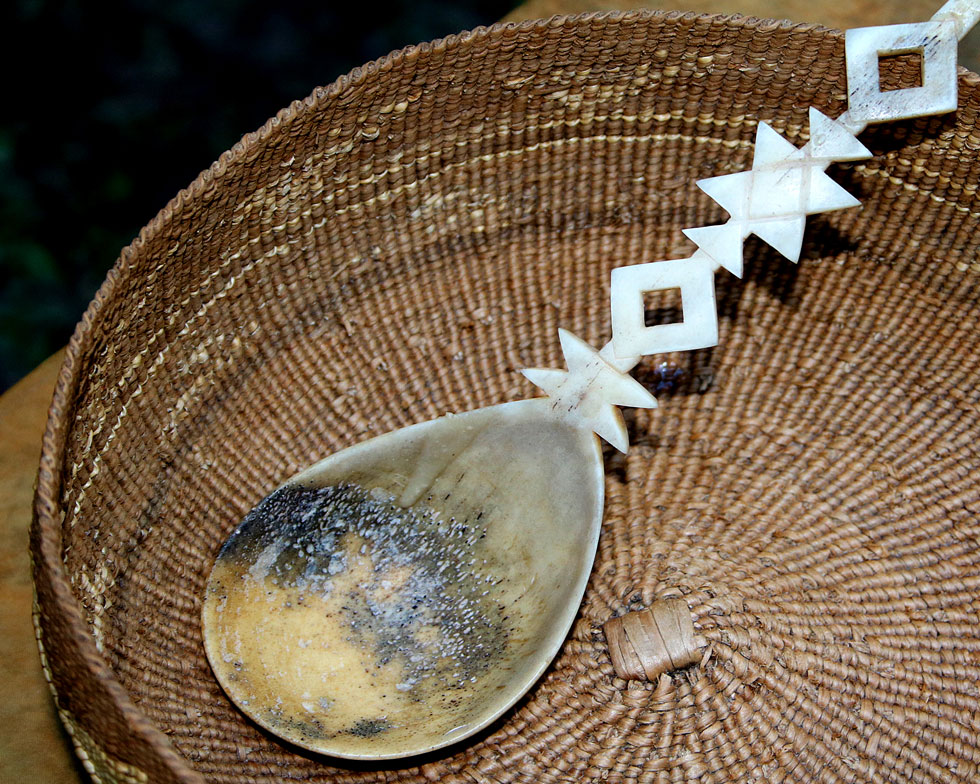
Photo by Lozen Nez
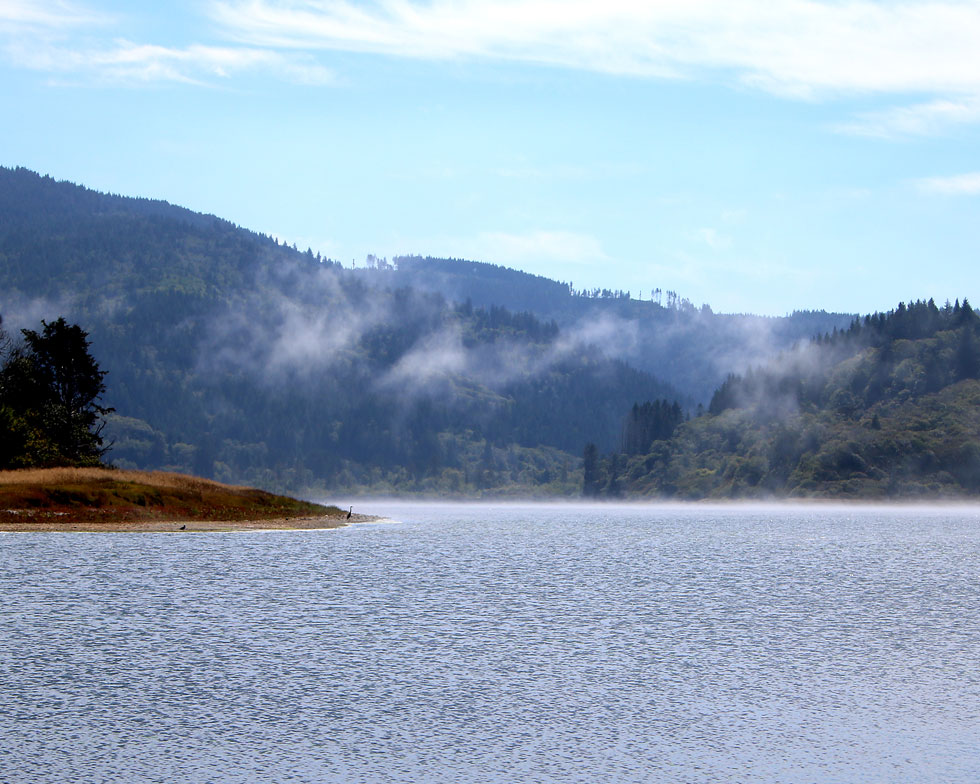
Photo by Lozen Nez
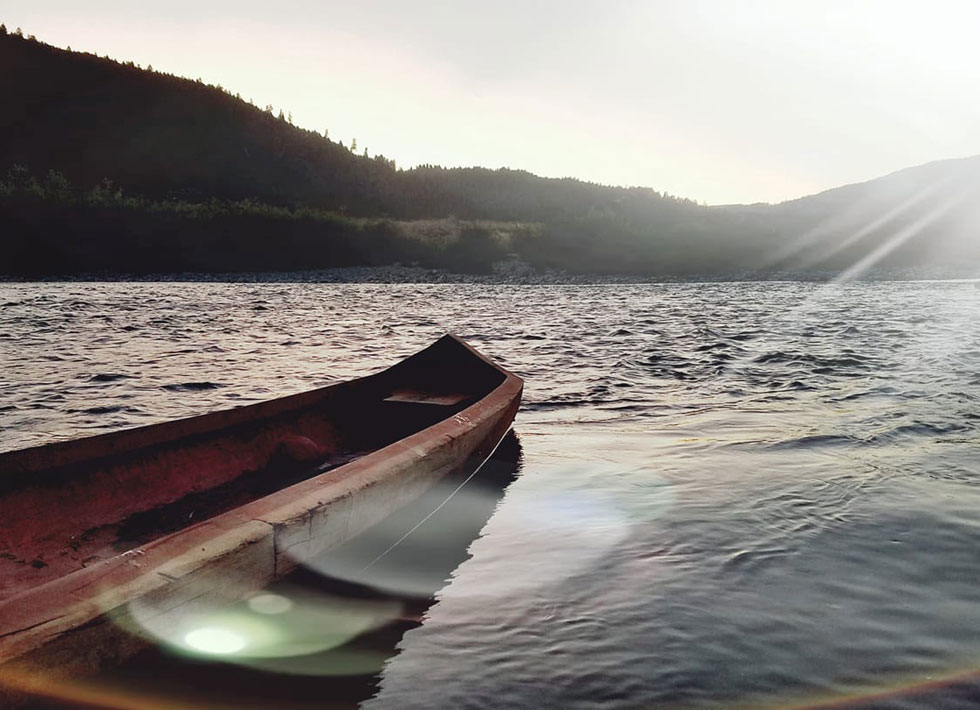
Photo by Gary Colegrove
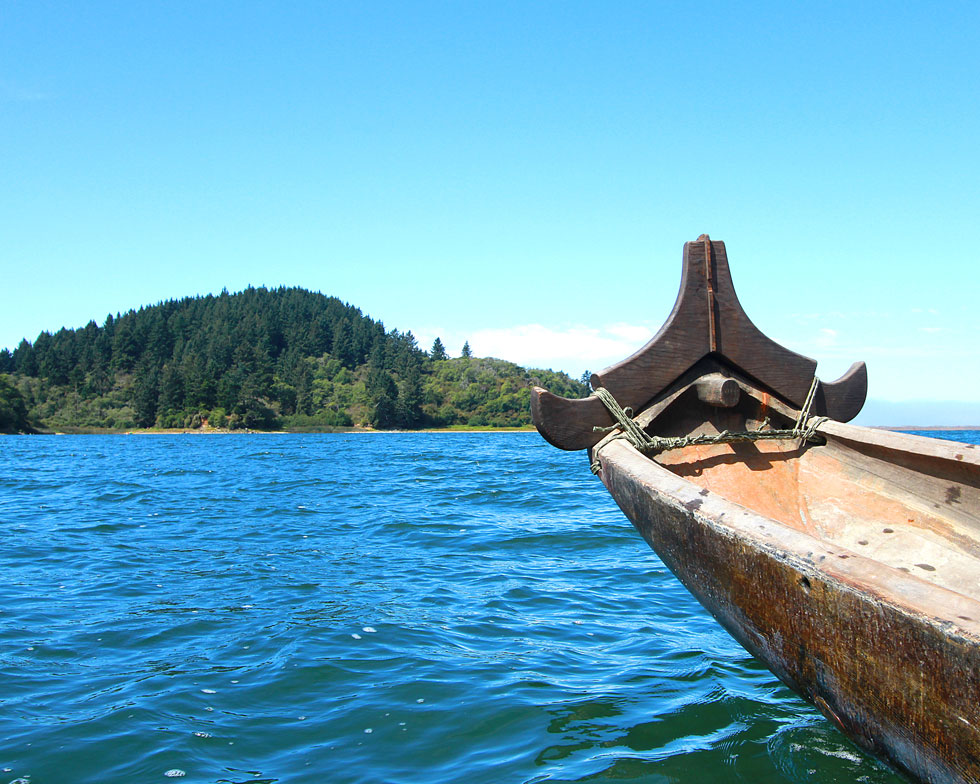
Photo by Gary Colegrove
